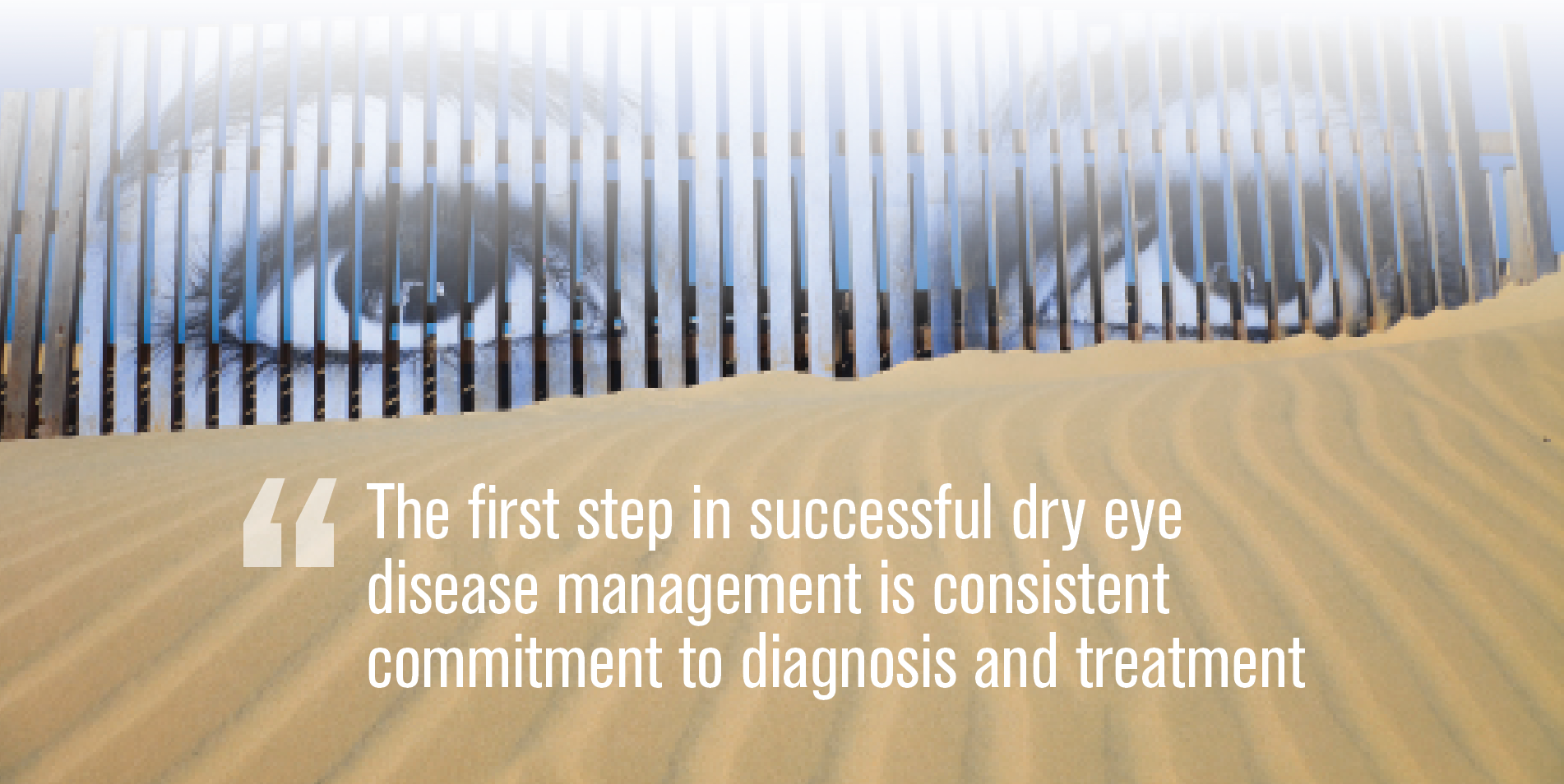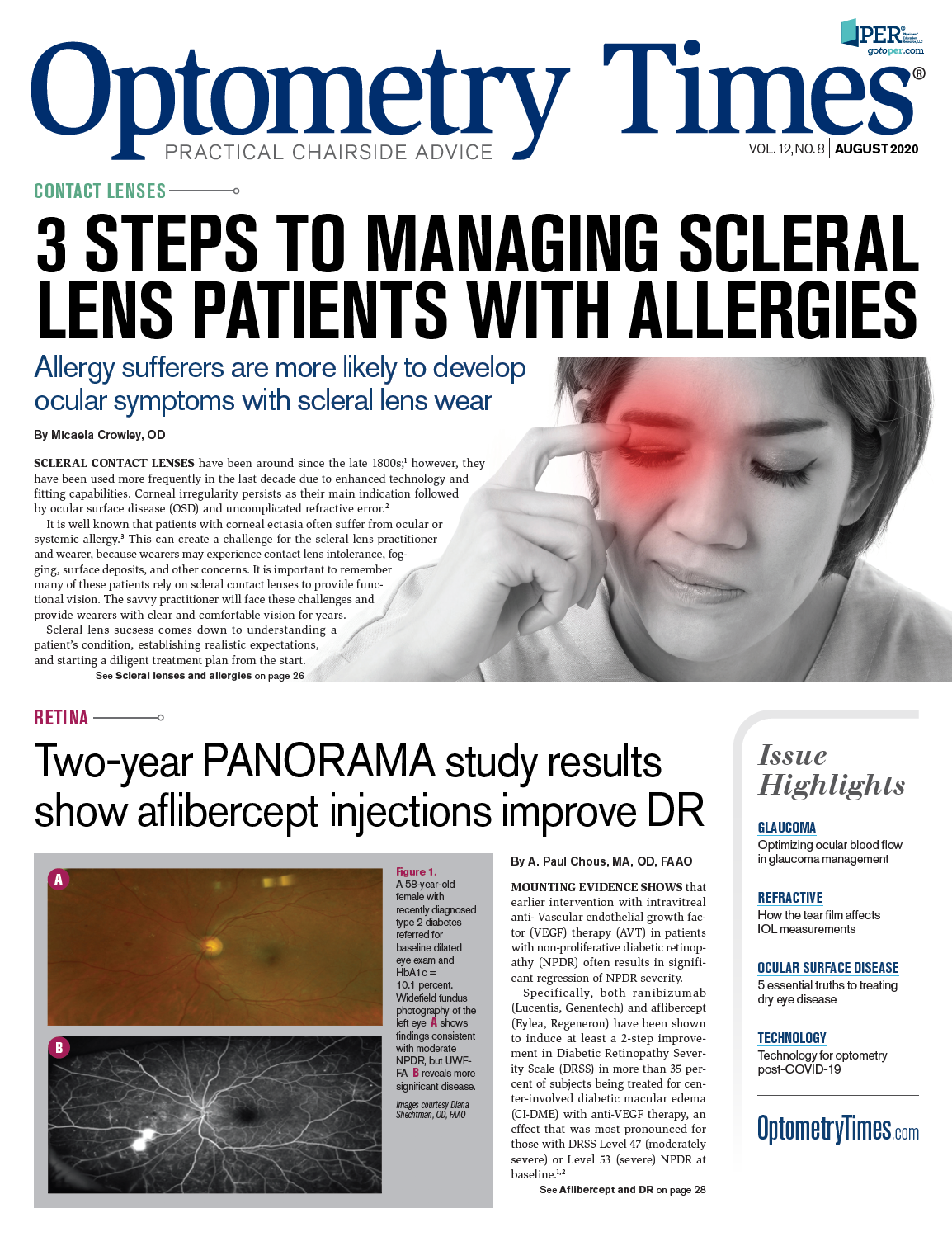5 essential truths to treating dry eye disease
Regardless of protocol or treatment guideline, here is how to do it in your practice

Dry eye disease is ubiquitous across all of eye care. The condition affects the quality of routine vision exams, contact lens fittings, and ophthalmic surgical outcomes. Dry eye disease affects a wide variety of ages, both men and women and all races. Most optometric practices see ocular surface disease each and every day.
Dry eye disease guidelines are equally ubiquitous. Several evidence-based algorithms have been published by various academic societies over the last decade. These protocols were created because there was a need to provide method to the madness of dry eye diagnosis and treatment. There was a disconnect between identifying the disease state and providing the appropriate treatment in many settings.
All too often, doctors were managing dry eye disease based solely on their own clinical experiences and anecdotal information. Additionally, some eyecare providers had not changed their practice patterns as dry eye disease diagnostics and treatment options evolved. Many physicians clamored for guidance to give them direction for care and, ultimately, better outcomes for patients.
Related: 5 common ocular problems seen during the pandemic
Protocol choice
Unfortunately, no one issued the warning, “Be careful what you wish for because you just might get it.” Now, doctors have many different algorithms to choose from—the sheer number of protocols can lead to a “paralysis of analysis.”
Some of the protocols are robust documents that dissect dry eye disease from its cellular origins to the most advanced treatments available at the time of publication. Others offer a more direct “if/then” roadmap. Each in its own way can be intimidating to the primary-care eyecare provider who manages multiple fronts in her practice and has limited time and resources to take a deep dive into dry eye disease. With the established prevalence of dry eye disease affecting tens of millions of Americans, practices must treat dry eye.
One question remains: How do I do it in my practice?
There is no one-size fits all approach to treating dry eye disease. However, there are some essential truths to treating this condition. Here are 5 of them.
Related: At-home therapy can alleviate contact lens discomfort
1. Start at the beginning
Ask yourself an important question, “Do I want to do this?” The answer is the first secret to success or failure with dry eye disease or any other endeavor.
If dry eye is not an area of interest, do yourself and your patients a favor and find a trusted colleague in your area who would like to accept your referral. Some doctors simply don’t have a passion for treating moderate to severe dry eye, which is reasonable, but those doctors can continue to be a resource for their patients and maintain a role in their care. Unfortunately, optometrists who don’t provide directed care for their DED patients leave those patients to flounder. Such patients will often slip away and search for other providers. Failing to refer a dry eye patient does not necessarily translate to patient retention.
2. Know your enemy
Dry eye disease is defined in part as a multifactorial, chronic condition. The “multifactorial” aspect is what makes it elusive to treat and creates frustration for both doctors and patients.
Related: Why patient occupation matters with dry eye disease
If you want to successfully treat dry eye in your practice, it is critical to recognize that ocular surface wellness does not hinge exclusively on the diagnosis of aqueous-deficient and evaporative dry eye. The patient’s ocular and medical history as well as his list of medications provide insight into precipitating factors. The patient’s blink phenomenon, lid closure, and overall lid hygiene play a large role. There’s more to properly and completely diagnosing dry eye disease than simply labeling aqueous-deficient or evaporative.
The incomplete identification of comorbid factors leads to incomplete treatment and therefore incomplete satisfaction.
While the multifactorial nature of the condition can make it daunting, the complexity need not slow down the patient’s examination. Diagnostic testing like osmolarity, meibography, and inflammatory biomarkers give a more detailed clinical picture and can become invaluable tools for some dry eye practitioners. However, a thorough slit-lamp exam with digital expression and the appropriate use of vital dyes can provide a lot of information without a negative impact on efficiency.
Related: Dry eye in the digital age
3. Build a united front
A weakness of dry eye protocols is that they may tell the doctor what to do and when, but they don’t always provide guidance on how the staff participates in the dry eye examination. Staff education and engagement is critical.
When it comes to treating dry eye disease, many doctors are their own worst enemies. They leave all of the diagnostic testing, patient education about disease state, and explanation of treatment options for the exam chair. This is a big reason why treating ocular surface disease gets a bad rap for being inefficient and exasperating to manage.
The lift is too heavy for practitioners. Even the best-intentioned doctors will drop their attention to dry eye disease when push comes to shove, and the waiting room starts to back up.
However, if the conversation starts at the front desk and proceeds through pre-testing, the doctor’s role is more manageable. The key is continuity. The staff needs to carry the same message throughout the patient encounter and patient handoff to the doctor for the examination and the delivery of the treatment plan.
Related: Remember the basics as dry eye treatments expand
4. Money is not holding you back
No matter what the budget is, effective and beneficial dry eye treatment is within reach. Highly detailed protocols can have the unintended effect of discouraging doctors rather than creating enthusiasm for a workable roadmap. The algorithms may suggest diagnostic and therapeutic options unavailable to the doctor. Rather than be informative or even aspirational, they can inspire a feeling of inadequacy.
At the outset, some eyecare providers feel defeated and shrug off advanced dry eye treatment as something for the experts. Nothing could be further from the truth. As the adage goes, “A journey of a thousand miles begins with a single step.”
The first step in successful dry eye disease management is consistent commitment to diagnosis and treatment. Patients who enter the office receive a validated dry eye survey, appropriate messaging from staff, and an examination by the doctor with keen observation of the ocular surface and adnexa. If the practice is inconsistent and dry eye disease is only part of the conversation when it is convenient, the doctor’s journey of a thousand miles will be walking around the same block over and over again. When inconsistency is an option, people will choose it every time.
5. Failure to plan is planning to fail
Create a staged plan for incorporating more dry eye diagnostics in your practice to make it more digestible for both the providers and staff. Massive changes are rarely sustainable and often resented by people working in the office. Additionally, changing too many elements of the patient experience at once will reinforce the inefficiency myth of dry eye management.
Related: Homeostasis is the Holy Grail in dry eye disease
Before you huddle up with your team to discuss the plan, make certain your message and goals are clear. Each team member needs to understand how her role will be modified and what her personal responsibilities are. A global announcement of, “We’re going to start doing more dry eye,” will be met with skepticism. Rather than leaning in to see how they can be contributors, many staff will take a step back to see how serious the doctor truly is before giving their commitment. Setting specific goals and expectations for each staff member implies that the doctor’s dedication and failure is not an option.
As practices are beginning to refine or redesign their in-office patient experiences, dry eye disease should not fall by the wayside. As a largely symptom-driven condition, patients will continue to seek care. Now is an ideal time to consider how your practice will respond.

Newsletter
Want more insights like this? Subscribe to Optometry Times and get clinical pearls and practice tips delivered straight to your inbox.